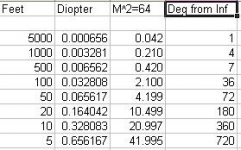The SLC competes with the Ultravid and the HT. At the new price, the SLC is more than competitive.
The Swarovision line competes with the EDG. Both offer flat fields, something that many birders find appealing.
Swarovski is establishing a price distinction between the SLC and SV while at the same time making it clear who the SLC competes with. My guess is SLC sales paled in comparison to Swarovisions. If true, that will no longer be the case.
The Swarovision line competes with the EDG. Both offer flat fields, something that many birders find appealing.
Swarovski is establishing a price distinction between the SLC and SV while at the same time making it clear who the SLC competes with. My guess is SLC sales paled in comparison to Swarovisions. If true, that will no longer be the case.






